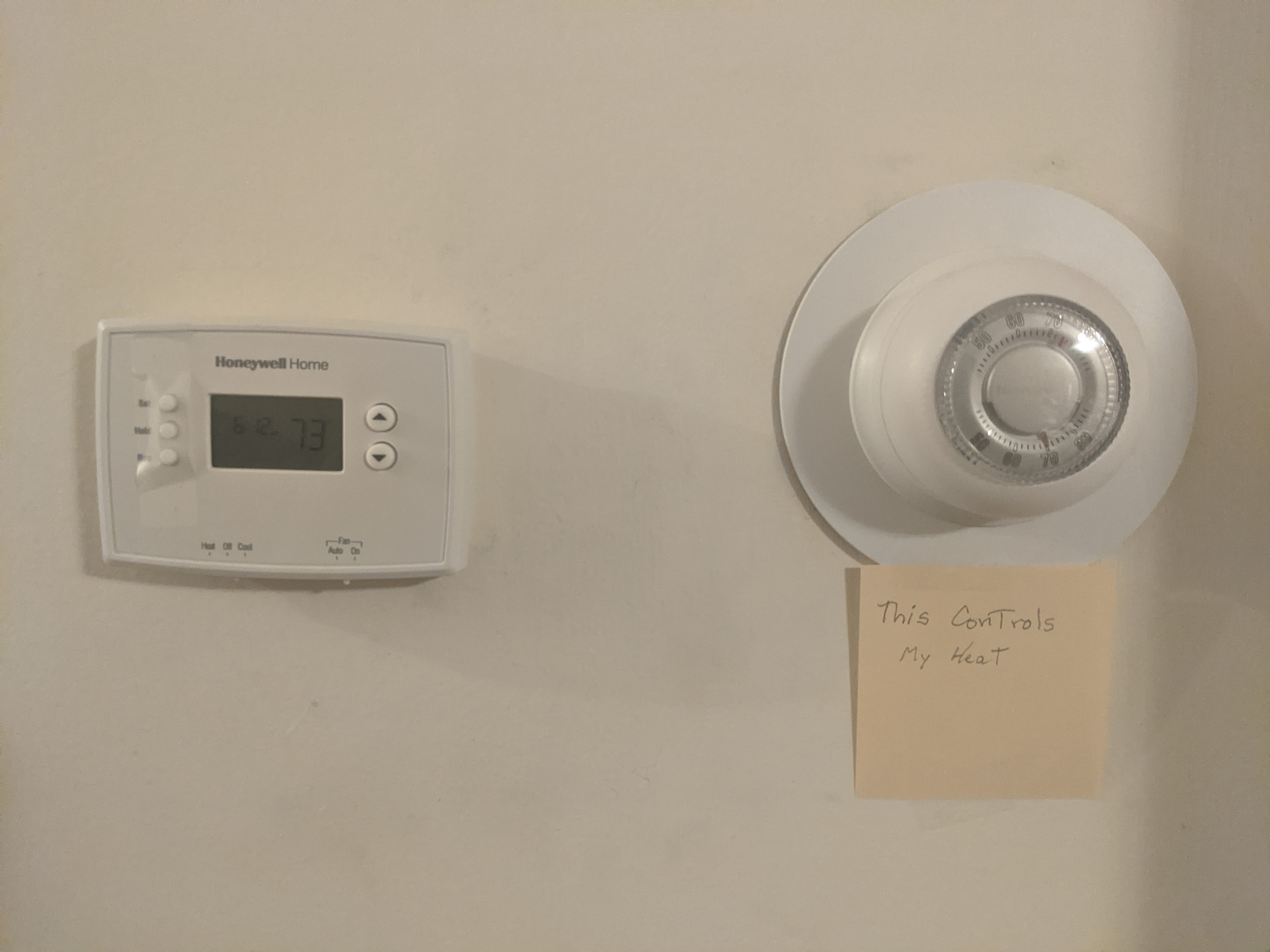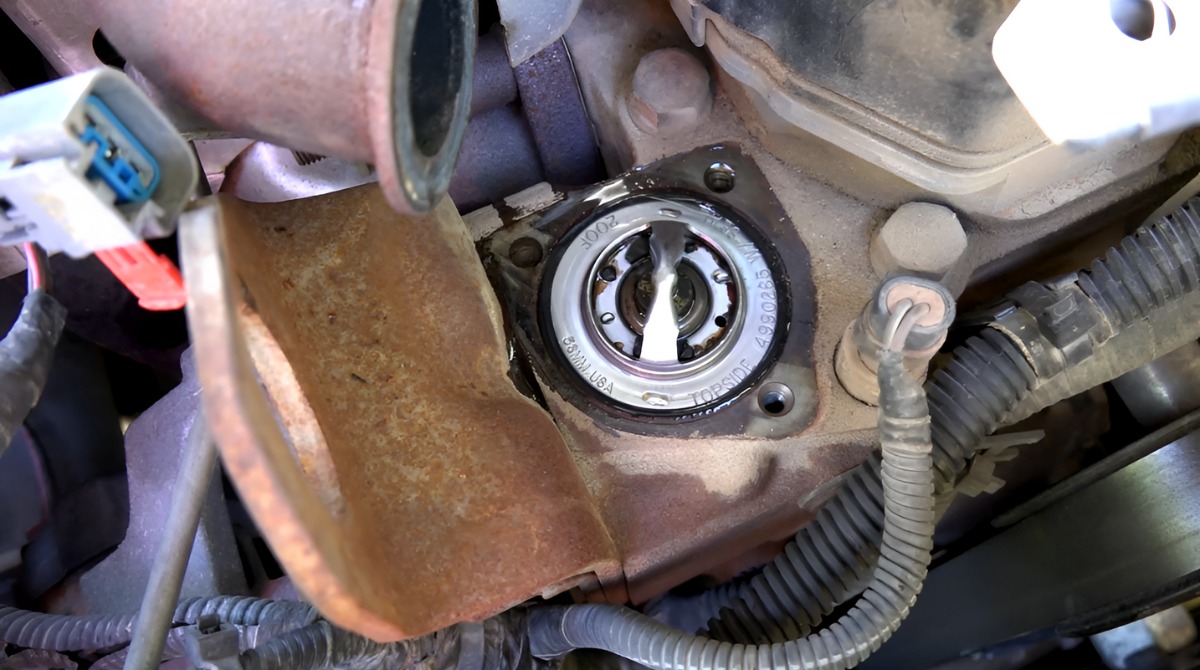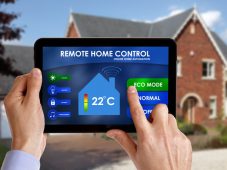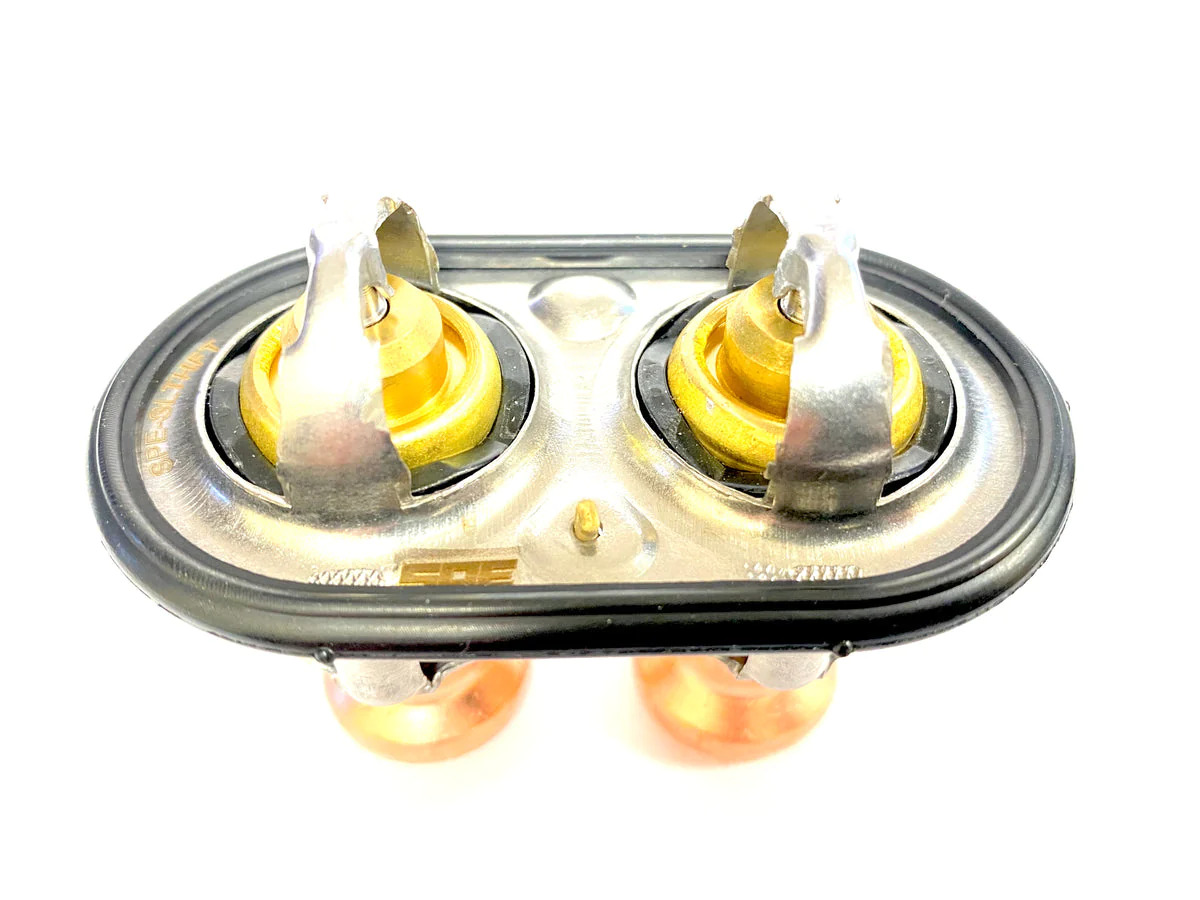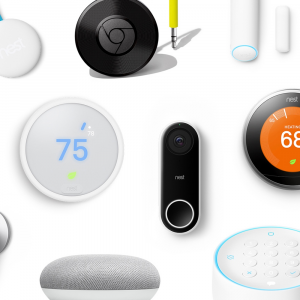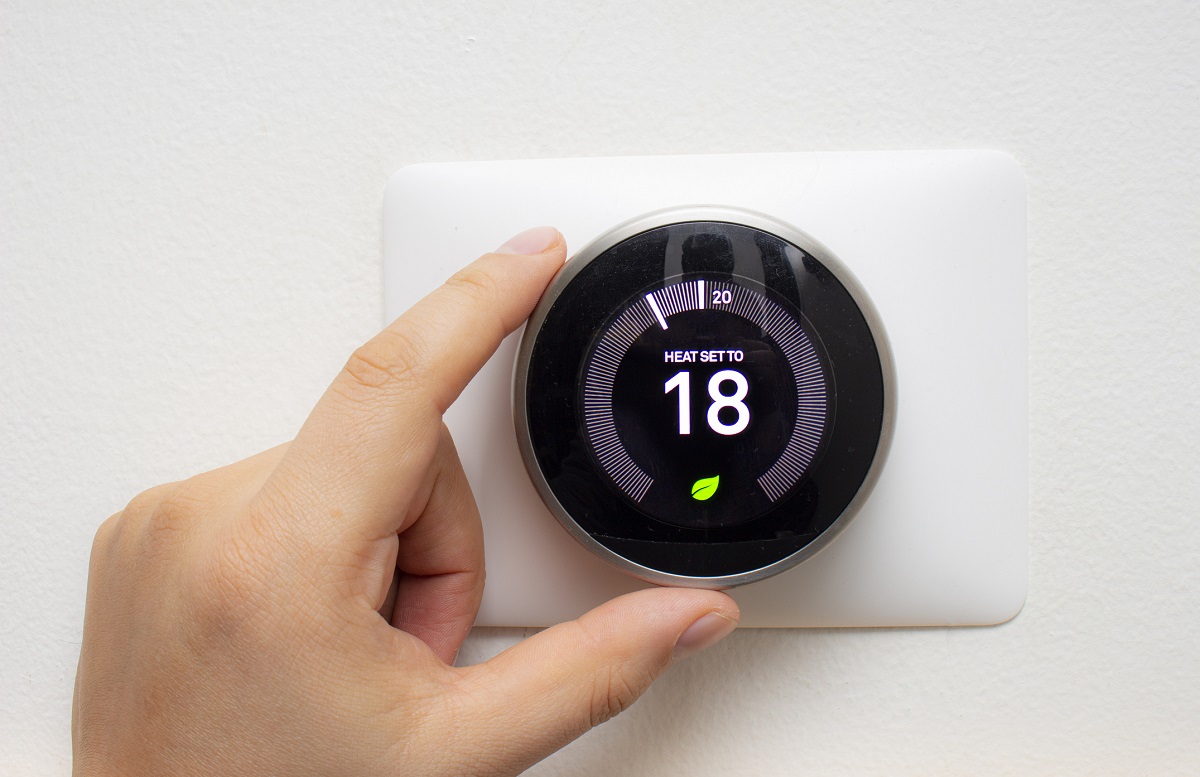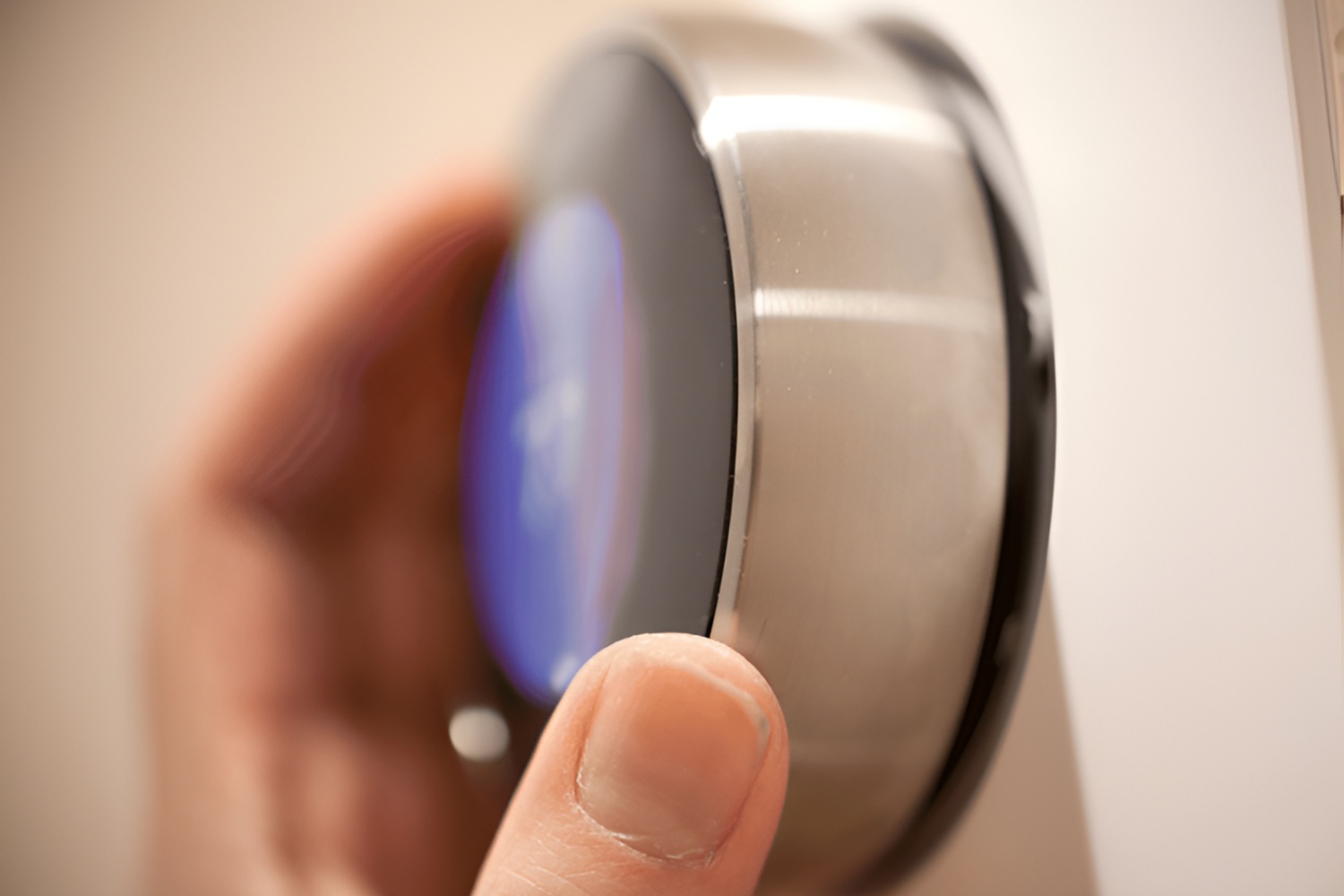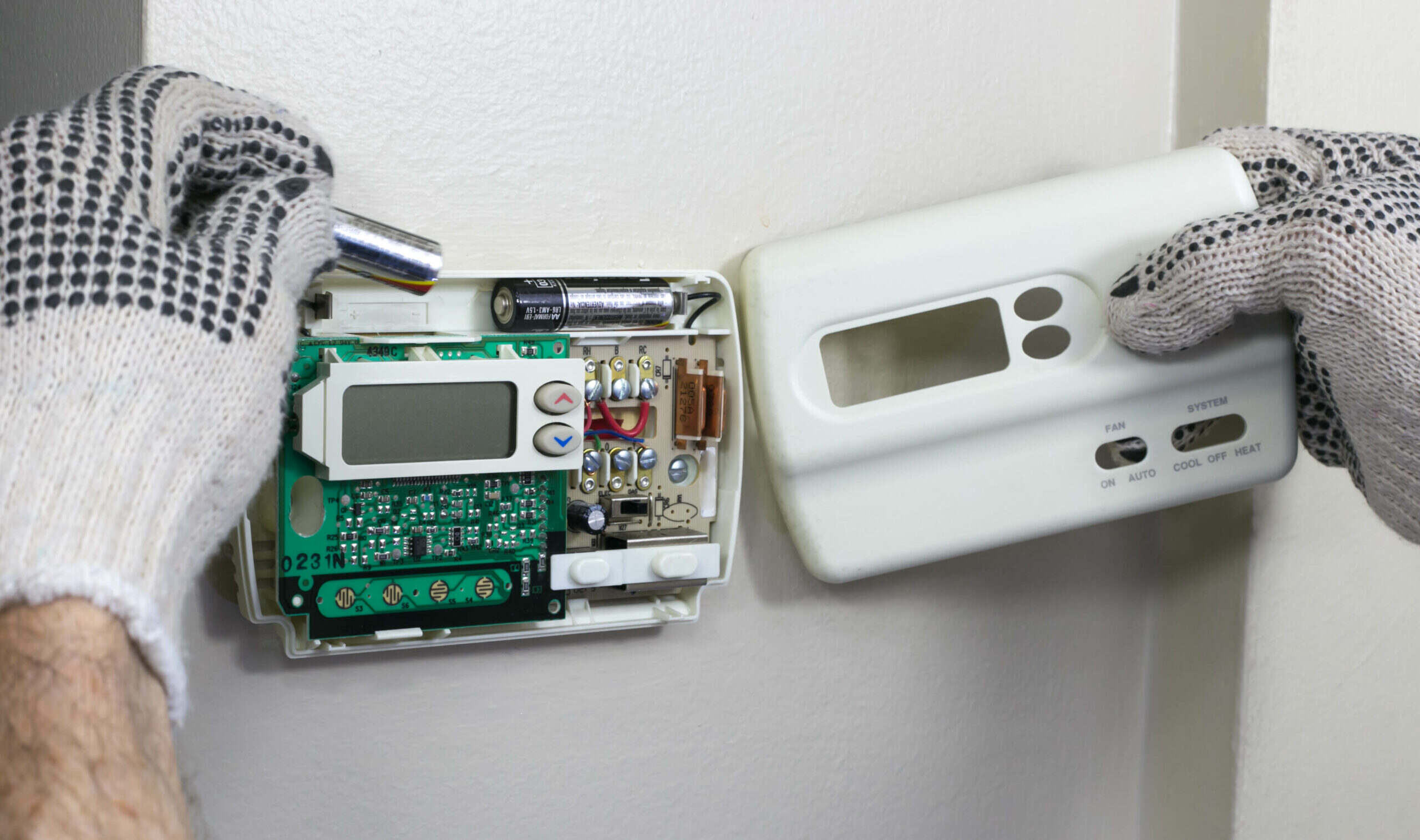Introduction
Welcome to the world of HVAC (Heating, Ventilation, and Air Conditioning) systems, where comfort and control meet technological innovation. If you’ve ever wondered why your house has two thermostats instead of just one, you’re not alone. Many homeowners find themselves puzzled by the presence of these seemingly duplicate devices.
Thermostats play a crucial role in regulating the temperature of our homes, ensuring that we stay cozy in the winter and cool in the summer. But the fact that some houses have multiple thermostats can be confusing, leaving homeowners wondering why this redundancy exists.
In this article, we will explore the reasons behind the presence of two thermostats in certain homes and delve into the benefits and functionality they offer. By the end, you’ll have a clear understanding of why some houses require multiple thermostats and how they contribute to a more comfortable living environment.
To grasp the concept of multiple thermostats, it’s essential to first understand the basics of what they do and how they work. A thermostat is a device that monitors and controls the temperature of an area, typically a room or a zone in a house. It consists of a temperature sensor, which measures the ambient temperature, and a control system that activates the heating or cooling equipment based on the desired temperature setting.
Traditionally, a single thermostat would be located in a central area of the house, such as the living room, and would control the temperature for the entire home. However, as homes have become larger and more complex, with multiple levels, wings, or different heating and cooling requirements, a single thermostat may not be sufficient to provide optimal comfort and energy efficiency.
So, why do some homes require two thermostats? The answer lies in the need for more precise temperature control and the implementation of zoned HVAC systems. In the next section, we will explore these reasons in more detail, shedding light on the benefits and types of systems that utilize multiple thermostats.
Thermostat Basics: What They Do and How They Work
Before we delve into the intricacies of multiple thermostats, let’s take a closer look at the fundamental workings of these devices. A thermostat serves as the control center for your HVAC system, allowing you to set and maintain the desired temperature in your home.
At its core, a thermostat measures the current temperature in your living space using a built-in sensor. You can then adjust the thermostat to your desired temperature, and it will signal your HVAC system to either heat or cool the air until it reaches the set temperature.
Thermostats typically come in two varieties: programmable and smart. Programmable thermostats allow you to set different temperatures for specific times of the day or days of the week. This feature enables energy-saving by automatically adjusting the temperature when you’re away or asleep and ensuring comfort when you’re home. On the other hand, smart thermostats offer advanced features such as learning your temperature preferences and allowing remote control via smartphone applications.
In terms of functionality, thermostats work in conjunction with your HVAC system’s heating and cooling equipment. When the ambient temperature falls below the set temperature, the thermostat sends an electrical signal to activate the furnace or heat pump, initiating the heating process. Similarly, when the temperature rises above the desired level, the thermostat signals the air conditioner to cool the room down.
Thermostats use a simple but effective principle called anticipatory control to maintain an even temperature. Once the desired temperature is reached, the thermostat anticipates the slight temperature drop that occurs when heating or cooling equipment shuts off. By turning the system off slightly before the set temperature is reached, the thermostat prevents temperature swings and ensures a comfortable environment.
Moreover, thermostats offer features like fan control, humidity control, and air circulation settings. They can also display current temperature readings, provide maintenance alerts, and allow for manual overrides when immediate temperature adjustments are needed.
In the next section, we will explore the reasons behind the need for multiple thermostats in some houses and the advantages they bring in terms of comfort and energy efficiency.
Understanding the Need for Multiple Thermostats
While a single thermostat may suffice for smaller homes, larger houses or those with multiple floors, wings, or distinct heating and cooling requirements often benefit from the use of multiple thermostats. The need for multiple thermostats arises from the desire for more precise temperature control and the implementation of zoned HVAC systems.
One of the main reasons for having multiple thermostats is to achieve optimal comfort throughout the entire house. With a single thermostat, it can be challenging to evenly distribute heating or cooling across different areas. Rooms that receive more sunlight or have higher occupancy may require additional cooling, while rooms in the basement or on the top floor may need extra heating. By installing multiple thermostats, you can customize the temperature control for each area, ensuring that everyone in the house is comfortable.
Another factor that contributes to the need for multiple thermostats is energy efficiency. In a home with a single thermostat, the entire house is treated as one zone, and the HVAC system works to maintain a uniform temperature throughout. However, not all areas of the house may require the same level of heating or cooling at all times. For example, during the day, the upper floor may receive ample sunlight and become warmer, while the basement remains cooler. With multiple thermostats, you can create zones and adjust the temperature settings accordingly, allowing you to save energy by heating or cooling only the specific areas that need it.
Zoned HVAC systems, which utilize multiple thermostats, are designed to enhance both comfort and energy efficiency. These systems partition the house into different zones, each controlled by its own thermostat. Dampers installed in the ductwork allow the system to direct heated or cooled air selectively to each zone, based on temperature settings. This zoning mechanism enables homeowners to fine-tune the temperature in specific areas and avoid wasting energy on unoccupied rooms or zones that require different temperature preferences.
By implementing zoned HVAC systems with multiple thermostats, you can experience the benefits of targeted temperature control, improved comfort, and significant energy savings. However, it’s crucial to choose the right type of system for your home and seek professional advice to ensure proper installation and optimal performance.
In the next section, we will explore the various benefits that having two thermostats in your house can offer, beyond just customized temperature control and energy efficiency.
Benefits of Having Two Thermostats in Your House
Having two thermostats in your house can provide several benefits that go beyond just customized temperature control and energy efficiency. Let’s explore some of the advantages that come with the use of multiple thermostats.
1. Enhanced Comfort: With multiple thermostats, you can create different temperature zones in your home. This allows you to tailor the heating and cooling to each area’s specific needs. You can ensure that bedrooms are cozy at night, living areas are comfortable during the day, and unused rooms are kept at energy-saving temperatures. This level of temperature customization enhances overall comfort and eliminates temperature disparities throughout the house.
2. Energy Efficiency: By dividing your home into zones with separate thermostats, you have better control over energy consumption. Instead of heating or cooling the entire house to a single temperature, you can focus on the areas that are in use. This targeted approach saves energy by avoiding unnecessary heating or cooling in unoccupied rooms or areas that require different temperature preferences. As a result, you can reduce your energy bills and minimize the environmental impact of your HVAC system.
3. Personalized Temperature Settings: Individual preferences for temperature can vary from person to person. With two thermostats, you can accommodate different preferences within the same household. For example, if one family member prefers a cooler bedroom at night while another prefers a slightly warmer temperature, each person can set their preferred temperature in their respective zones. This individualized control over temperature settings ensures that everyone in the house can enjoy their preferred level of comfort.
4. Flexibility and Independence: Multiple thermostats provide the flexibility to adjust temperature settings independently in different areas of the house. This means that you can have one zone set to a higher temperature for a gathering or a different zone set to a lower temperature for a workout space. The ability to independently control the temperature in each zone offers greater convenience and adaptability to your changing needs and activities throughout the day.
5. Improved System Performance: With two thermostats, your HVAC system can operate more efficiently. The system can distribute heating or cooling more effectively to meet the demands of specific zones. This optimization of airflow and temperature control helps maintain a comfortable environment without overworking the equipment. As a result, the lifespan of your HVAC system can be extended, and the need for repair or replacement can be minimized.
In summary, having two thermostats in your house offers a range of benefits, including enhanced comfort, energy efficiency, personalized temperature settings, flexibility, and improved system performance. These advantages make multiple thermostats a worthwhile investment for homeowners seeking optimal temperature control and efficient operation of their HVAC systems.
Types of Systems That Require Multiple Thermostats
Multiple thermostats are typically found in homes with HVAC systems that require more precise temperature control or have specific zoning needs. Let’s explore some of the common types of systems that benefit from the use of multiple thermostats.
1. Multi-Story Homes: Houses with multiple floors often require multiple thermostats. The temperature variations between floors can be significant, especially in larger homes. A single thermostat located on one floor may not accurately represent the temperature throughout the entire house. By installing a thermostat on each floor, you can achieve better control over temperature and ensure comfort throughout the home.
2. Multi-Zone Systems: HVAC systems with multiple zones rely on multiple thermostats to regulate different areas independently. These systems utilize dampers in the ductwork to control the airflow and direct heating or cooling to specific zones. Each zone has its own thermostat, allowing residents to set different temperatures for different areas of the house. This type of system is particularly useful for homes with distinct heating or cooling needs in different parts of the house.
3. Ductless Mini-Split Systems: Ductless mini-split systems consist of multiple indoor units that provide individualized heating and cooling to different areas or rooms. Each indoor unit has its own thermostat, allowing occupants to control the temperature in each room independently. This type of system is commonly used in home additions, converted garages, or homes without existing ductwork. Multiple thermostats are essential for effectively managing temperature control in each area served by the ductless mini-split system.
4. Zoned Forced Air Systems: Zoned forced air systems utilize motorized dampers to control airflow and temperature distribution throughout the house. These systems divide the house into zones, each with its own thermostat. The dampers open and close to regulate the flow of heated or cooled air to each zone as dictated by the temperature settings on the respective thermostats. Zoned forced air systems provide efficient and customized temperature control, making them ideal for larger homes with varying heating and cooling requirements in different areas.
It’s important to note that the installation and configuration of multiple thermostats depend on the specific requirements of your HVAC system. Professional guidance and expertise are crucial to ensure proper setup and optimization of the system to achieve the desired temperature control and energy efficiency.
In the next section, we will explore zoning systems in more detail, including how they work and why they utilize two thermostats.
Zoning Systems: How They Work and Why They Use Two Thermostats
Zoning systems are HVAC setups that divide a house into different zones, each with its own thermostat and independent temperature control. These systems utilize the use of two thermostats to achieve precise temperature regulation and energy efficiency. Let’s take a closer look at how zoning systems work and why they require two thermostats.
Zoning systems operate by using motorized dampers installed in the ductwork. These dampers open and close to regulate the airflow to each zone based on the temperature requirements set on the corresponding thermostat. When the thermostat detects that the temperature in its zone needs heating or cooling, it signals the HVAC system to activate and send conditioned air to that specific area. As the desired temperature is reached, the damper adjusts to maintain the set temperature until the zone is satisfied.
But why do zoning systems use two thermostats instead of a single one? The answer lies in the need to have a master thermostat and zone thermostats. The master thermostat controls the overall operation of the HVAC system and sets the temperature for the largest or main zone, which typically covers most of the house. The zone thermostats, on the other hand, regulate the temperature in specific areas or zones within the house.
The master thermostat coordinates the functioning of the HVAC system as a whole. It receives inputs from the zone thermostats and determines when the heating or cooling equipment should be activated. It also controls the overall airflow distribution and coordinates the opening and closing of the dampers. The master thermostat ensures that the HVAC system operates efficiently and maintains the desired temperature balance throughout the house.
The zone thermostats, as mentioned earlier, are responsible for controlling the temperature in individual areas or zones. These thermostats are typically installed in strategic locations, such as different floors, wings, or rooms with specific temperature requirements. Each zone thermostat independently monitors and adjusts the temperature in its designated area, ensuring customized comfort based on the preferences and needs of the occupants in that zone.
By utilizing two thermostats in zoning systems, homeowners can achieve more precise temperature control, improve comfort, and conserve energy. The master thermostat acts as the central control point, optimizing system performance and maintaining overall temperature balance. The zone thermostats provide localized control, allowing residents to set different temperatures in different areas or zones of the house according to their specific preferences and requirements.
When properly installed and configured, zoning systems with two thermostats can significantly enhance comfort, energy efficiency, and overall HVAC performance. However, it’s crucial to consult with HVAC professionals to design and implement the zoning system accurately, ensuring proper placement of thermostats, dampers, and airflow regulation for optimal temperature control and energy savings.
In the following section, we will address some common questions and concerns that homeowners may have regarding the use of multiple thermostats in their homes.
Common Questions and Concerns About Multiple Thermostats
As homeowners explore the use of multiple thermostats in their homes, they may have questions or concerns. Let’s address some of the common queries and address potential concerns about the installation and use of multiple thermostats.
1. Will having two thermostats significantly increase my energy consumption?
No, having two thermostats does not necessarily increase energy consumption. In fact, multiple thermostats can improve energy efficiency by allowing targeted temperature control in specific areas or zones. You can adjust the temperature settings independently for each zone, avoiding unnecessary heating or cooling in unoccupied areas and optimizing energy usage.
2. Can I install multiple thermostats myself, or do I need professional assistance?
While there are DIY options available for thermostat installation, it is recommended to seek professional assistance when installing multiple thermostats. HVAC professionals have the expertise to determine the optimal locations for thermostats, configure the wiring correctly, and ensure that the system is properly calibrated and synchronized. Professional installation helps to avoid any errors that may compromise the performance and functionality of the thermostats and the overall HVAC system.
3. Do I need to replace my existing HVAC system to accommodate multiple thermostats?
In most cases, you do not need to replace your existing HVAC system to accommodate multiple thermostats. Many HVAC systems can be retrofitted with zoning capabilities, allowing you to incorporate multiple thermostats without major system modifications. However, it is best to consult with an HVAC professional to assess your current system’s compatibility and determine the best course of action.
4. Can I control multiple thermostats from a single control panel or smartphone app?
Yes, depending on the type of thermostats and HVAC system you have, it may be possible to control multiple thermostats from a single control panel or smartphone app. Smart thermostats often offer the convenience of centralized control and remote access, allowing you to monitor and adjust the settings of multiple thermostats conveniently. However, it’s essential to ensure compatibility between the thermostats and the control panel or app to ensure seamless operation.
5. Can I still use a programmable or smart thermostat with multiple thermostats?
Absolutely! Programmable and smart thermostats are compatible with multiple thermostats and can offer added benefits such as energy-saving features, scheduling options, and remote control functionalities. You can set different temperature schedules and preferences for each zone, enhancing both comfort and energy efficiency in your home.
If you have any specific concerns or questions about multiple thermostats for your home, it is always best to consult with an HVAC professional. They can provide personalized guidance and address any unique considerations based on your home’s layout, HVAC system, and specific requirements.
In the next section, we will provide some tips for using multiple thermostats efficiently to maximize comfort and energy savings.
Tips for Using Multiple Thermostats Efficiently
When it comes to using multiple thermostats in your home, there are a few tips and strategies that can help you maximize comfort and energy efficiency. Here are some guidelines to follow:
1. Understand Your Zones: Familiarize yourself with the different zones in your home and their specific heating and cooling needs. Identify areas that receive more sunlight, rooms that are frequently occupied, and spaces that may require different temperature preferences. This understanding will guide you in setting appropriate temperature settings for each zone.
2. Utilize Programmable or Smart Thermostats: Take advantage of the features offered by programmable or smart thermostats. Set temperature schedules based on your daily routines and occupancy patterns. By adjusting the temperature automatically when you’re away or asleep, you can save energy and avoid heating or cooling empty zones.
3. Balance Temperature Settings: Aim to maintain a balance between the temperature settings in each zone. While individual preferences may differ, extreme temperature variations between zones can cause discomfort and inefficient energy usage. Consider the overall comfort and energy efficiency of the entire house when setting temperature preferences for each zone.
4. Optimize airflow with Dampers: If your home has motorized dampers, ensure these are properly adjusted to regulate the airflow for each zone. Improperly balanced dampers can result in uneven temperature distribution. Consult with an HVAC professional to ensure the dampers are calibrated correctly, allowing for efficient and balanced airflow throughout your home.
5. Regularly Review and Adjust Settings: Monitor your energy usage and comfort levels regularly and make adjustments as needed. Factors such as seasonal changes, occupancy patterns, and personal preferences may require periodic recalibration of temperature settings. Stay attentive to these factors to optimize energy consumption and comfort throughout your home.
6. Seek Professional Maintenance: Regular maintenance of your HVAC system is critical for its optimal performance. Schedule annual or bi-annual maintenance visits with an HVAC professional to ensure that all components, including thermostats, are clean and functioning properly. Professional maintenance can improve energy efficiency, extend the lifespan of your system, and address any potential issues before they become major problems.
7. Educate Household Members: Ensure that all household members are familiar with the functionality and benefits of multiple thermostats. Encourage them to use the thermostats responsibly and understand the importance of energy conservation. By collectively working together to optimize temperature control, you can enhance comfort and reduce energy waste.
By following these tips and actively managing your multiple thermostats, you can optimize comfort, energy efficiency, and overall performance. Remember to consult with an HVAC professional for personalized advice and guidance based on your specific system and home configuration.
Conclusion
Having two thermostats in your house may initially seem like a duplication of devices, but it can provide several benefits in terms of comfort, energy efficiency, and temperature control. By understanding the need for multiple thermostats, the basics of thermostat functionality, and the different types of systems that require them, homeowners can make informed decisions about their HVAC setups.
With multiple thermostats, you can create zones within your home and customize temperature settings to suit specific areas and individual preferences. This targeted temperature control enhances comfort and eliminates energy wastage in unoccupied or underutilized spaces.
Implementing multiple thermostats is particularly beneficial in larger homes, multi-story houses, or properties with distinct heating and cooling requirements in different zones. Zoning systems, which rely on multiple thermostats, improve temperature distribution, provide energy-efficient operation, and offer personalized control over temperature settings.
When using multiple thermostats, it is essential to consider factors such as proper installation, optimal placement, and system synchronization. Seeking professional assistance can ensure the correct configuration and seamless operation of your HVAC system.
By following tips for using multiple thermostats efficiently, such as understanding your zones, utilizing programmable or smart thermostats, and regularly reviewing and adjusting settings, you can further enhance comfort and energy savings in your home.
In conclusion, while the presence of multiple thermostats in your house may seem perplexing at first, they play a crucial role in providing customized temperature control, increasing energy efficiency, and optimizing comfort. By embracing the benefits and understanding how to use multiple thermostats effectively, homeowners can enjoy a comfortable, energy-efficient living space while minimizing their environmental impact and reducing energy costs.







